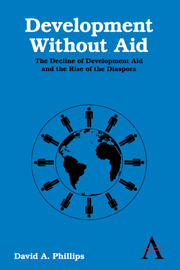Book contents
- Frontmatter
- Contents
- List of Acronyms
- Acknowledgments
- 1 Introduction: Motivation and Perspective
- 2 What Is Foreign Aid, Who Does It, Why and How Much Is There?
- 3 How Far Has Development Aid Been Effective?
- 4 Why Has Development Aid Done So Little?
- 5 Changing the Dynamics of Development
- 6 “New Aid”: New Ways to Promote and Finance Development?
- 7 Another Pathway Out of Poverty?
- 8 Exit Strategy – Replacing Foreign Assistance
- 9 Postscript
- Notes
- Index
6 - “New Aid”: New Ways to Promote and Finance Development?
Published online by Cambridge University Press: 05 July 2013
- Frontmatter
- Contents
- List of Acronyms
- Acknowledgments
- 1 Introduction: Motivation and Perspective
- 2 What Is Foreign Aid, Who Does It, Why and How Much Is There?
- 3 How Far Has Development Aid Been Effective?
- 4 Why Has Development Aid Done So Little?
- 5 Changing the Dynamics of Development
- 6 “New Aid”: New Ways to Promote and Finance Development?
- 7 Another Pathway Out of Poverty?
- 8 Exit Strategy – Replacing Foreign Assistance
- 9 Postscript
- Notes
- Index
Summary
If there is any consensus today about what strategies are likely to help the development of the poorest countries it is this: there is no consensus.
Joseph Stiglitz (2005)Non-alienating and Alienating Aid
Before moving towards a conclusion we can turn our attention once again to the efforts of the aid donors following the “New Start” endorsed by the Paris and other international conferences in the first decade of the 2000s. Does this New Start in the end at least have the potential to make foreign aid effective?
At the start of this book it was suggested that aid might be reclassified into two more categories – alienative and non-alienative. Assistance in general can have negative effects but certain types of assistance tend to be the more negative, especially within the soft category of aid. The latter tend to be more intrusive, longer term and have negative effects on capacity, motivation and “buy-in.” These were called “type B.” Non-alienative assistance on the other hand tended to be more instrumental, focused on gaps in capability, shorter term and less likely to have the negative effects. These were called “type A.” The issue here is one of process and effective development assistance. That is, it is as much to do with the “process” by which assistance is delivered as the product that is delivered.
- Type
- Chapter
- Information
- Development without AidThe Decline of Development Aid and the Rise of the Diaspora, pp. 141 - 154Publisher: Anthem PressPrint publication year: 2013



